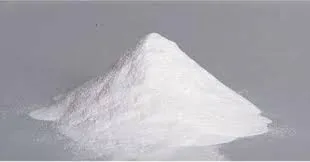
Sep . 28, 2024 17:03 Back to list
hydroxyethyl cellulose solubility
Understanding the Solubility of Hydroxyethyl Cellulose
Hydroxyethyl cellulose (HEC) is a non-ionic water-soluble polymer derived from cellulose, which is a natural polymer made from plant cell walls. Due to its unique properties, HEC has found applications in various industries, including pharmaceuticals, cosmetics, food production, and construction. Understanding the solubility of HEC is essential for optimizing its use in these applications.
Understanding the Solubility of Hydroxyethyl Cellulose
The degree of substitution (DS) refers to the average number of hydroxyethyl groups attached to the cellulose backbone. A higher DS typically enhances the solubility of HEC in water. This is because the hydroxyethyl groups are hydrophilic, allowing the molecule to interact more effectively with water molecules and increase its solvation. Therefore, manufacturers can tailor the DS to achieve the desired solubility for their specific applications.
hydroxyethyl cellulose solubility

Temperature also plays a significant role in the solubility of HEC. In general, increasing the temperature tends to improve solubility, as higher temperatures can reduce the viscosity of aqueous solutions and promote better interaction between HEC molecules and water. However, this effect has its limits; excessive temperatures might lead to thermal degradation of the polymer, which is counterproductive.
The pH of the solution can also affect HEC solubility. HEC is generally stable across a wide pH range (approximately 3 to 11), but extreme pH environments can affect its solubility. In highly acidic or basic conditions, the stability of HEC can be compromised, potentially leading to reduced solubility and viscosity changes.
In practical applications, HEC is widely used as a thickening agent, emulsifier, and stabilizer. In pharmaceuticals, it serves as a binder in tablets and a thickening agent in topical formulations. In cosmetics, HEC enhances the texture and viscosity of creams and lotions. The food industry utilizes HEC as a stabilizer and thickener in various products, including sauces and dressings.
In conclusion, the solubility of hydroxyethyl cellulose is influenced by molecular weight, degree of substitution, temperature, and pH. Understanding these factors allows manufacturers and formulators to optimize HEC's performance in diverse applications, ensuring that it meets the specific requirements of each industry. As research continues to explore the properties and potential uses of HEC, its role as a valuable ingredient will likely expand even further.
-
Versatile Hpmc Uses in Different Industries
NewsJun.19,2025
-
Redispersible Powder's Role in Enhancing Durability of Construction Products
NewsJun.19,2025
-
Hydroxyethyl Cellulose Applications Driving Green Industrial Processes
NewsJun.19,2025
-
Exploring Different Redispersible Polymer Powder
NewsJun.19,2025
-
Choosing the Right Mortar Bonding Agent
NewsJun.19,2025
-
Applications and Significance of China Hpmc in Modern Industries
NewsJun.19,2025







